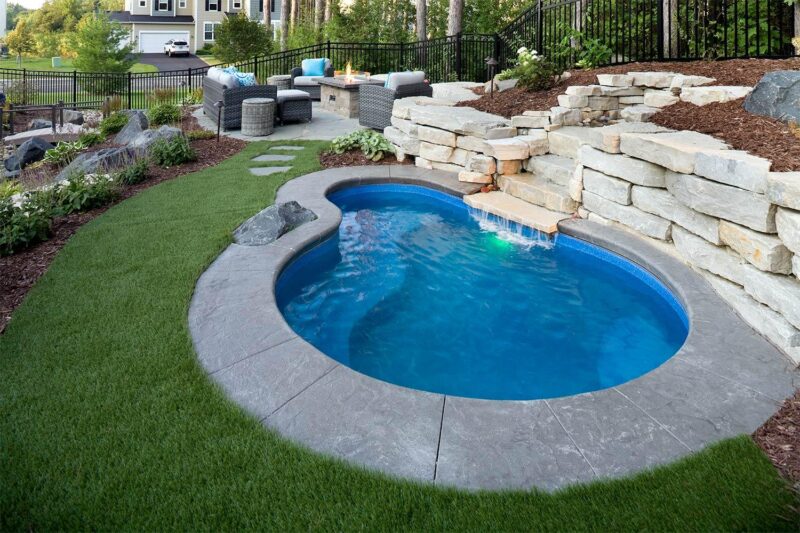Swimming pools are often considered the epitome of luxury, but they can also be a financial burden. The notion of owning a pool may conjure up images of extravagant expenses, a barrage of complex maintenance tasks, and high energy consumption. However, the emergence of plunge types is quickly reshaping this perception. Smaller in size yet abundant in benefits, these compact aquatic havens debunk the common misconceptions about pool maintenance and associated costs.
It provides the perfect antidote to spatial limitations and budgetary constraints. Its compactness doesn’t dilute its appeal but rather enhances its cost-effective qualities. This article ventures into the cost-effectiveness of plunge pools, illuminating how this trending option can reduce financial strain without compromising the joy of owning one.
Understanding Plunge Pools: Compact and Cost-Effective
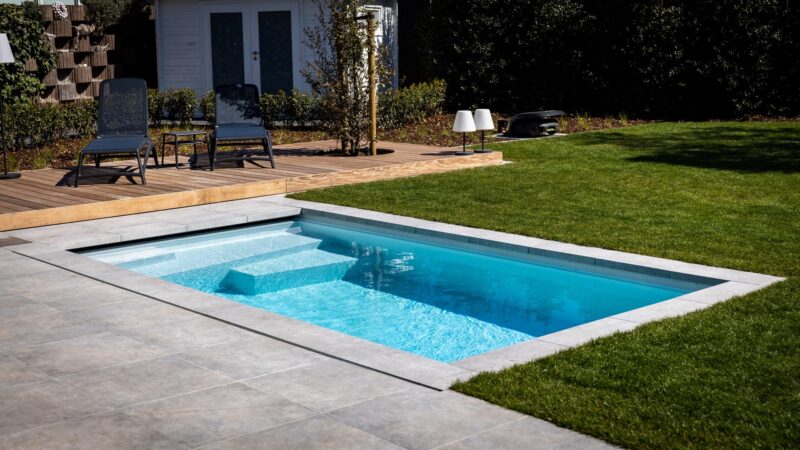
Plunge pools are small, a shallow kind, designed primarily for lounging and cooling off rather than swimming laps. They can fit into small yards, rooftop terraces, or even indoors, making them an ideal choice for homeowners with limited space. Their size typically ranges from 4m x 2m to 7m x 3m, and they are often less than 1.2m deep.
While this kind offers a reduced swimming area, they don’t skimp on functionality. You can incorporate jets for hydrotherapy, heating for year-round use, or even a swim jet system for resistance swimming. These options allow homeowners to customize their plunge pool experience without the exorbitant costs associated with larger traditional ones.
Lower Water Volume: A Thrifty Advantage
A key cost advantage of plunge pools lies in their reduced water volume. Because they hold less water than traditional pools, these require fewer resources to fill and maintain. This means less water usage, which can result in substantial savings on your water bill.
Moreover, a smaller water volume also requires fewer chemicals to maintain balance and cleanliness. Therefore, plunge pool owners spend less on chemical treatments, further reducing the operational cost. By requiring less to function, they make a strong case for being the financially savvy choice.
Energy Efficiency: A Win-Win for You and the Environment
The smaller size of plunge pools also translates into lower energy consumption. Heating a plunge pool requires less energy than heating a full-sized pool, reducing your energy costs. Similarly, the filtration systems in plunge types need less energy to operate because they’re servicing a smaller volume of water.
These energy efficiency benefits extend beyond cost savings, contributing to a smaller environmental footprint. By choosing this kind, you’re not only saving money but also promoting sustainability, making it a win-win choice for both your wallet and the planet.
Minimal Equipment Requirements: Less is More
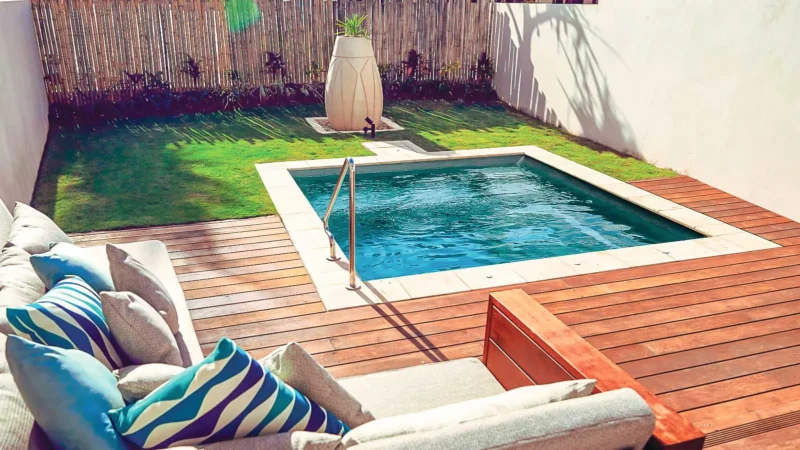
Plunge pools have simplified equipment needs compared to their larger counterparts. They typically require a smaller pump, a smaller heater, and a smaller filter system, which not only cost less to purchase but also to maintain and repair.
Because they have fewer components, there’s less that can go wrong, reducing the potential for expensive repairs. From installation to ongoing maintenance, the ‘less is more’ principle holds true, making plunge pools a cost-effective choice in terms of equipment requirements.
Easier Cleaning and Maintenance: Save Time, Save Money
The compact size of plunge pools makes them easier to clean and maintain. This means less time spent on maintenance and more time enjoying your pool. You’ll spend less on cleaning services or, if you choose to do it yourself, less time and effort maintaining your pool.
In addition, the smaller surface area reduces the amount of debris that can fall into the pool, making it easier to keep clean. Fewer cleaning requirements mean fewer cleaning materials and less wear and tear on your equipment, contributing to the cost-effectiveness of these pools.
Chemical Savings: Spend Less, Swim More
As mentioned, plunge pools require fewer chemicals to maintain due to their reduced water volume. This means that the owners can save significantly on the ongoing cost of chemicals.
Moreover, because plunge pools are easier to cover than larger ones, they lose fewer chemicals to evaporation, reducing the need for chemical replacement. This, coupled with the lower initial requirement for chemicals, makes them a more budget-friendly option when it comes to chemical maintenance.
Reduced Structural Maintenance: Less Hassle, More Savings
Plunge pools, due to their smaller size and simpler design, generally require less structural maintenance than larger types. This means less need for expensive repairs or renovations related to pool structure, such as resurfacing or tiling.
Plunge pools often have fewer features that require maintenance, such as steps, ladders, or diving boards, which can also reduce maintenance needs and costs. The structural simplicity of plunge types is yet another factor contributing to their cost-effectiveness.
Longevity of Components: Fewer Replacements, Greater Value
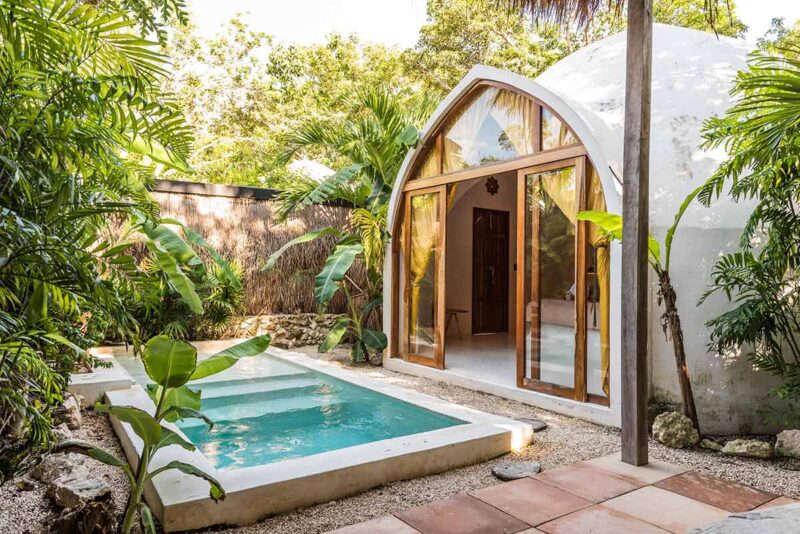
The simplified systems and reduced wear and tear on components in plunge pools can contribute to their longevity. With fewer components exposed to the elements and less overall use, the equipment in this type of pool tends to last longer than in a full-sized one
This means fewer replacements and repairs over the lifetime of the pool, adding to the cost savings. Long-lasting components don’t just reduce costs; they also mean less hassle and more time to enjoy the benefits of your special relaxation area.
Cost-Effective Design Options: Tailoring to Your Budget
Designing a plunge pool offers the opportunity to tailor the project to your budget. There are a wide range of design options, materials, contractors such as LittlePools, and features available, allowing you to create a pool that fits your aesthetic preferences without breaking the bank.
Whether you prefer a simple, minimalist design or a more elaborate set-up with premium materials and high-end features, there’s one to match your budget. The versatility of design options makes them an accessible and cost-effective choice for a diverse range of homeowners.
Professional Maintenance Services: An Investment in Efficiency
While plunge pools are simpler to maintain, there are still tasks that require professional attention. Investing in a professional maintenance service can actually be a cost-effective choice in the long run. Professionals can spot potential issues before they become costly problems, ensure the efficient operation of your pool, and save you the time and effort of maintenance.
While there is a cost associated with professional services, the benefits they provide can outweigh the expenditure, making this an investment worth considering.
Conclusion: The Cost-Effective Appeal of Plunge Pools
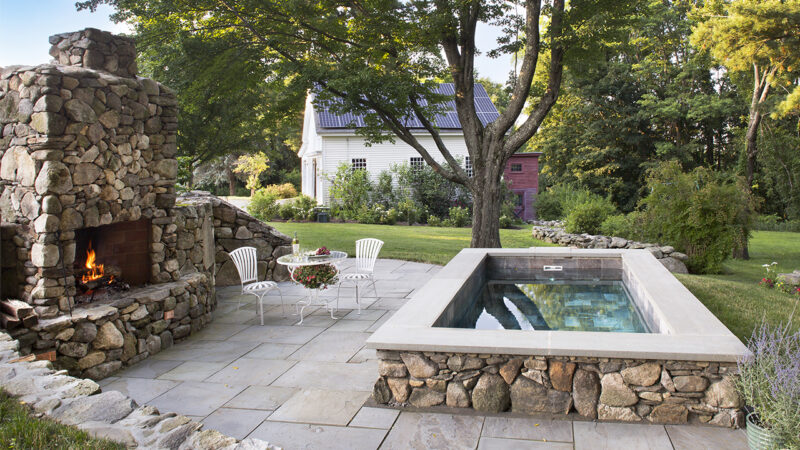
Plunge pools represent a revolution in the world of private pools, proving that size isn’t a determining factor for enjoyment. They offer a host of cost-effective advantages, including reduced water and energy usage, simplified maintenance, and overall affordability.
The decision to install one in your home shouldn’t be drowned in financial worries. They provide a way to enjoy the luxury of a personal pool while remaining mindful of budget and maintenance considerations. With their smaller size and efficient design, they are a practical and budget-friendly choice that doesn’t compromise the joy of aquatic leisure. Dive into the world of plunge pools and discover a cost-effective way to make a splash in your backyard.

